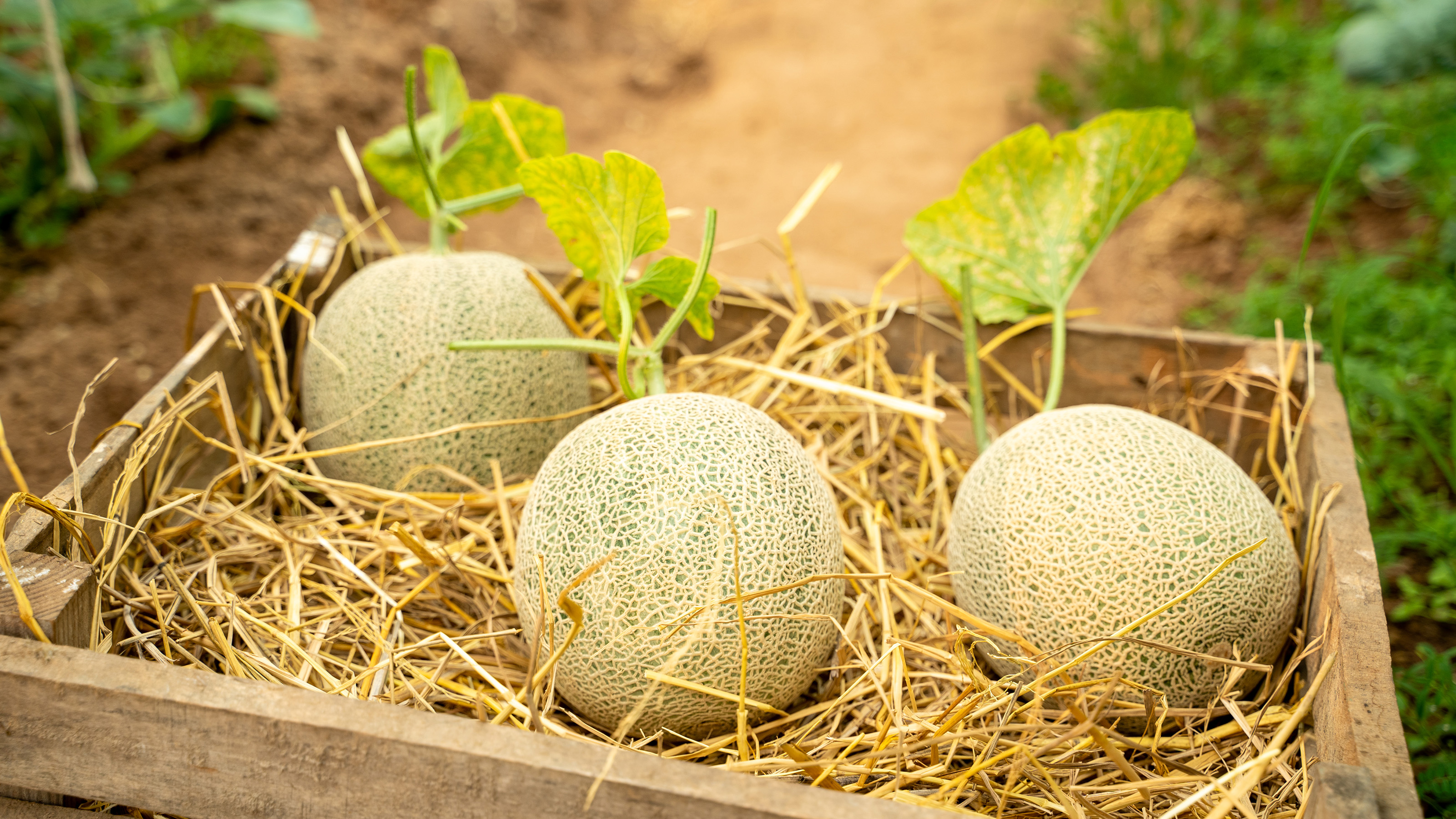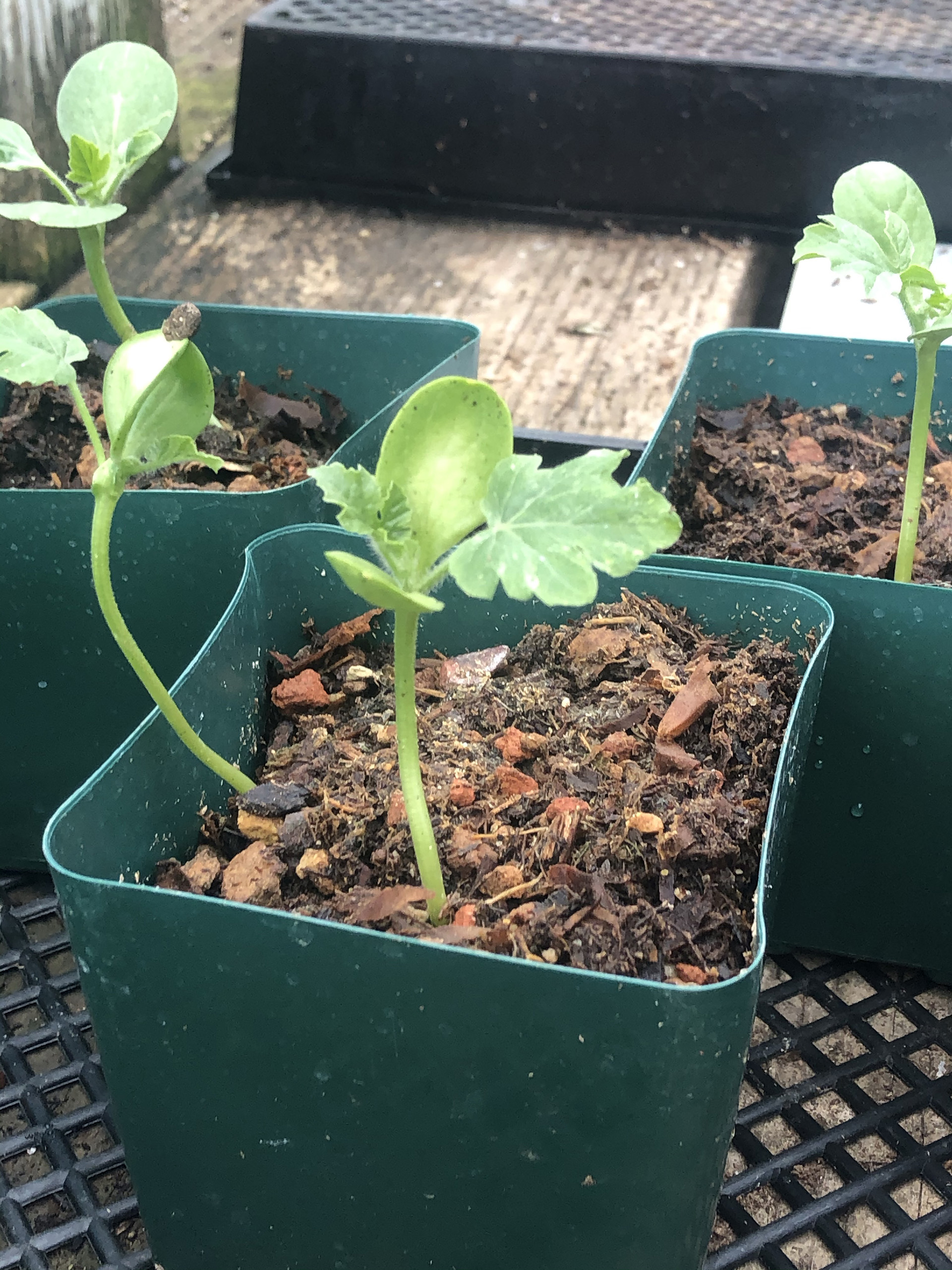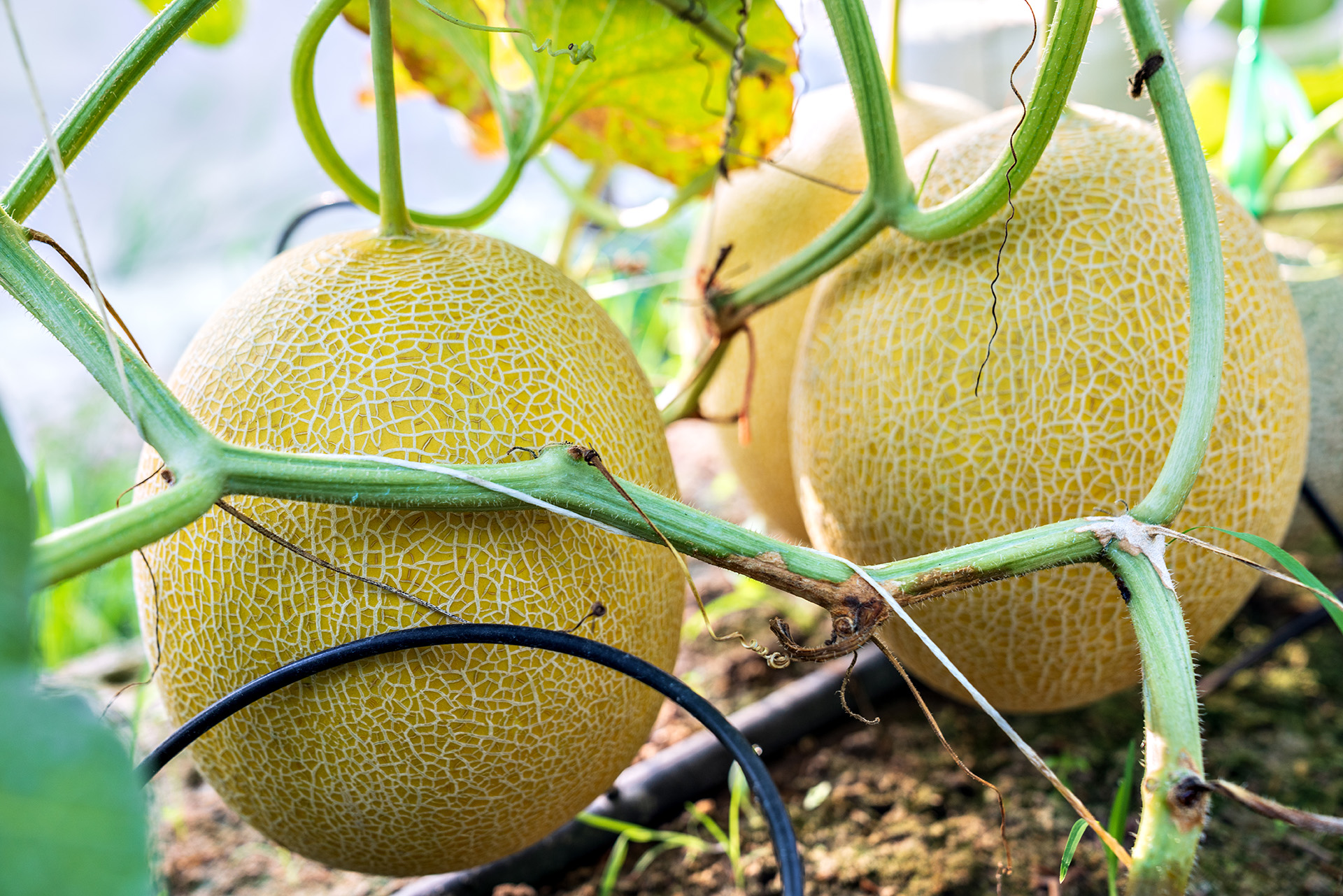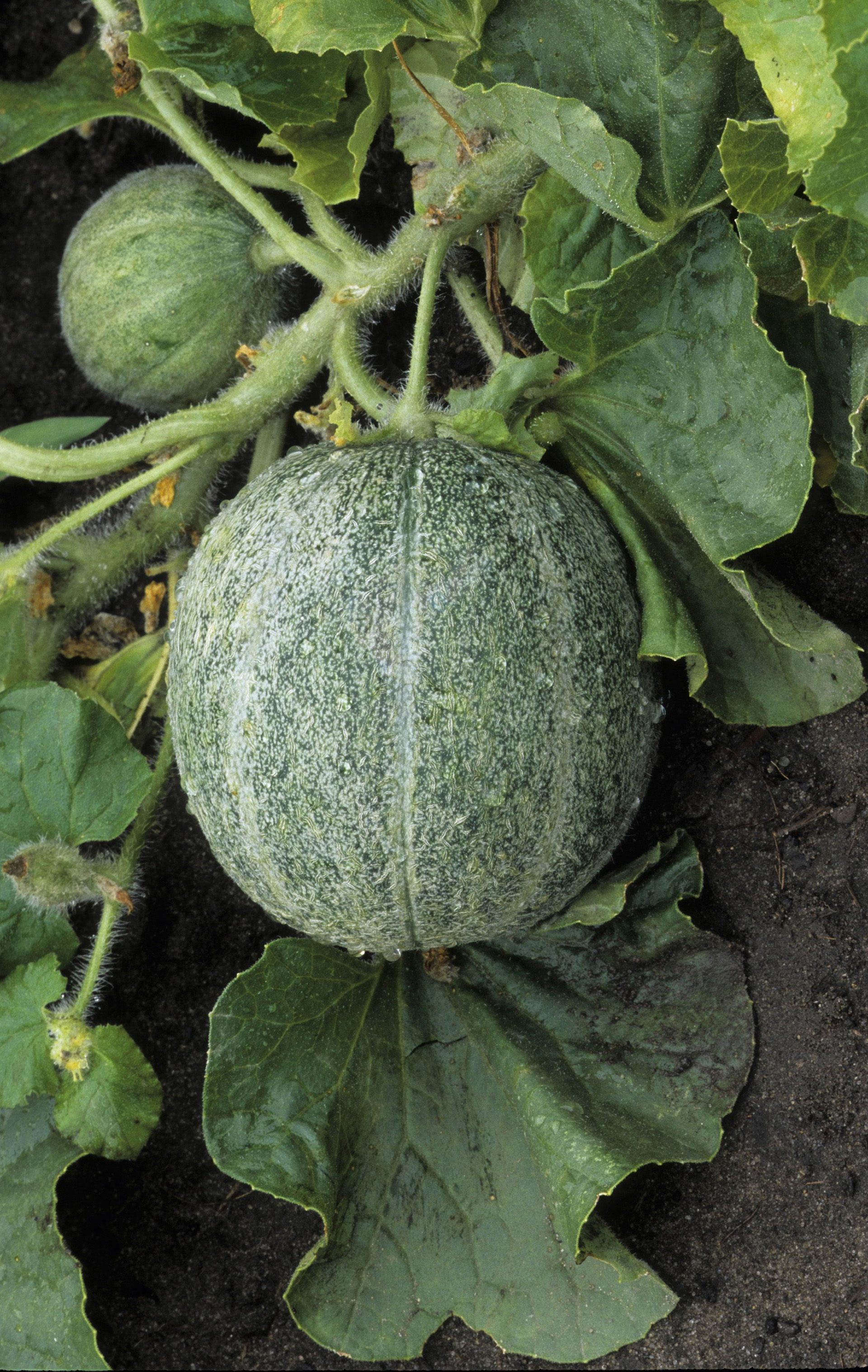How to grow cantaloupe – juicy, fragrant melons more than worth the effort
Growing cantaloupe melon is easy, but you need warm soil and sunny days. In cooler climates, try growing them under glass


If you want to know how to grow cantaloupe you’ll need to decide whether the climate where you live is warm enough to support these sun-worshippers outside. If not, it might be worth looking into how to grow cantaloupe in a greenhouse, cold frame or polytunnel – more on this later.
However you choose to grow cantaloupe, the deliciously fragrant fruits with their juicy, orange flesh, are more than worth the effort and deserve a place amongst your kitchen garden ideas.
Cantaloupe are the easiest of all the melon varieties to grow. Look after them well and you will enjoy a tasty treat full of summer goodness. Below, we have the best expert advice from garden gurus, who have plenty of tips for you on how to grow cantaloupe at home.
A note on the name: cantaloupe is used to refer to two slightly different varieties of melon. The European cantaloupe, C. melo var. cantalupensis, is ribbed, or striped, with a sweet, flavorful flesh and a gray-green skin. It differs from the North American cantaloupe, C. melo var. reticulatus, (pictured above) which is common in the United States, Mexico, and Canada. It is a round melon with a reticulated, net-like skin and firm, orange, moderately sweet flesh. Both types require similar growing conditions, and we refer to them as a group in this article.
How to grow cantaloupe from seed indoors

In cooler climates with short growing seasons it’s best to start your cantaloupe seeds off in pots indoors or in a greenhouse. Sow two seeds per pots 3 or 4 weeks before the soil warms up enough to transfer them outside. If both seeds germinate, discard the weaker of the two.
Melinda Myers, gardening expert, author, and host of The Great Courses’ How to Grow Anything DVD series says ‘These seedlings do not tolerate transplanting well so use biodegradable pots, like peat, cow or paper. Just slit the sides and bottom of the pots, remove the lip to prevent it from wicking water away from the roots and plant the transplant in the pot.’
How to grow cantaloupe from seed outside
To grow cantaloupe successfully from seeds outdoors you need warm conditions. Germination success is very dependent on soil temperature.
Design expertise in your inbox – from inspiring decorating ideas and beautiful celebrity homes to practical gardening advice and shopping round-ups.
Amy Enfield, Horticulturist for Bonnie Plants, says ‘Cantaloupe needs warm soil to grow and produce fruit, so the soil should be warmed to at least 70°F /21°C before planting (in the north, peonies blooming is a good indicator that the soil is warm enough to plant). You can speed up the soil warming process by laying down black ground cover or floating row covers to help trap warm air near the plants.’
Cantaloupes need to be planted in a site that gets plenty of sun and has well-drained, fertile soil. ‘To boost soil fertility, mix in several inches of rich compost or other organic matter before planting,’ adds Amy Enfield.
Melinda Myers agrees, ‘Adding compost prior to planting helps improve drainage in heavy soil and increases water holding ability in fast draining sandy soil.’
And if you’re gardening in a cooler climate or an area with short growing seasons, she suggests using ‘black plastic or fabric mulch to warm soil and speed the time between planting and harvest. Lay mulch over prepared soil several weeks before planting the seeds or transplants to warm the soil.’
As with all growing, you’ll need to be patient and wait for the time to come for when to pick cantaloupes. Most cantaloupes take anything between 80-100 days to produce mature fruit, however, as Melinda Myers adds, ‘It depends on the variety. The seed packet, catalogue description or plant tag will give the number of days from planting until harvest. You can find varieties that mature in 65 days.’
Growing conditions

Cantaloupe melons grow on vines, like pumpkins and squash, so besides warm temperatures and sunshine they need space, as Amy Enfield explains: ‘Cantaloupe vines need plenty of room to sprawl, so space plants 36 to 42 inches (91-107cm) apart. You can also save space by planting cantaloupe at the base of large, sturdy vegetable garden trellis ideas and encouraging the vines to grow upwards by tying vines to the trellis using soft plant ties.’
Growing under cover in cooler climates

In areas where warm soil and sunshine aren’t sustainable or can’t be guaranteed, it’s best to grow cantaloupe under cover. In cooler climates, cantaloupe can be grown very successfully in a greenhouse or in a coldframe. Alternatively, it’s possible to grow cantaloupe against a sunny sheltered wall with a cloche covering them, this will keep the soil warm before and after planting, and will provide sufficient protection from cooler overnight temperatures.
How to care for cantaloupe
To grow cantaloupe successfully, they will need plenty of water, but it’s a delicate balance. ‘Avoid overly wet or dry soil. Water thoroughly when the top few inches of soil are crumbly and slightly moist. Too much or too little water will adversely affect the harvest,’ says Melinda Myers.
Watering technique is important too, adds Amy Enfield, ‘Avoid wetting the leaves when watering to help prevent fungal diseases on the leaves,’ she explains. ‘Soaker hoses or drip irrigation work great for keeping the foliage dry. Add a thick layer of mulch around the plants to help the soil retain moisture and suppress weeds. Pull weeds early and often so they don’t compete with the vines. It will be difficult to weed later in the season once the vines are running without crushing them.’
Tips to boost cantaloupe flavor and sweetness
Take care not to break off the shoots when you’re watering or weeding around the plants, as expert Amy Enfield explains: ‘A lot of healthy leaves will mean sweeter fruit. For the best flavor, leave a few of the largest fruits growing on the vine and pinch off any younger fruits that begin to form. Then the plant will direct all of its energy to just those few developing melons. Since cantaloupe is a heavy feeder, feed continuously throughout the growing season to ensure the vines have ample nutrition.’
Is cantaloupe easy to grow?
As long as they have ample space to spread with plenty of moisture, lots of light, and a solid 2 to 3 months of heat, cantaloupe melons are fairly trouble free.
However, the climate is key, as Melinda Myers explains, ‘For those with long and warm (not too hot or too cool and wet) summers it’s easy to grow cantaloupe. They are a bit more challenging for those with shorter, cooler growing seasons.’
‘If you live in the north, to ensure you have a harvest, remove any blossoms that start to form within 50 days of your average first fall frost date to help larger fruit ripen before frost,’ advises Amy Enfield.
European cantaloupe varieties, such as the one pictured below, are slightly hardier than their North American cousins.

Our favorite varieties to try
‘Bonnie Plants has two great cantaloupes available as young starter plants: Super-45 which is powdery mildew resistant and Hale’s Best Jumbo Cantaloupe which is an heirloom variety,’ says Amy Enfield. ‘Two other delicious varieties of cantaloupe that are very sweet and have great flavor are Aphrodite which produces 6-8 lb melons and Atlantis which forms smaller, 4-5 lb melons’ she adds.
Melinda Myers suggests:
Minnesota Midget an heirloom variety producing 4-inch melons on 3-4 foot vines. It’s relatively quick growing and matures in 60 to 70 days.
Divergent is a favorite of many gardeners. It has a sweet flavor, performs well in short seasons and matures in 75 days.
Ambrosia is extra sweet with tender pale flesh ready in 86 days
Karen sources beautiful homes to feature on the Homes & Gardens website. She loves visiting historic houses in particular and working with photographers to capture all shapes and sizes of properties. Karen began her career as a sub-editor at Hi-Fi News and Record Review magazine. Her move to women’s magazines came soon after, in the shape of Living magazine, which covered cookery, fashion, beauty, homes and gardening. From Living Karen moved to Ideal Home magazine, where as deputy chief sub, then chief sub, she started to really take an interest in properties, architecture, interior design and gardening.
